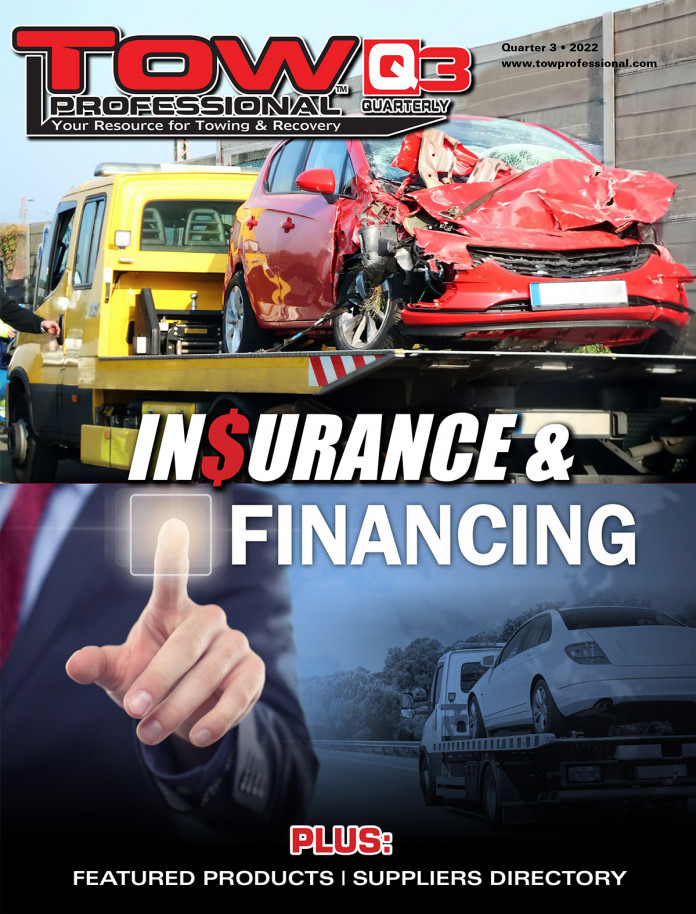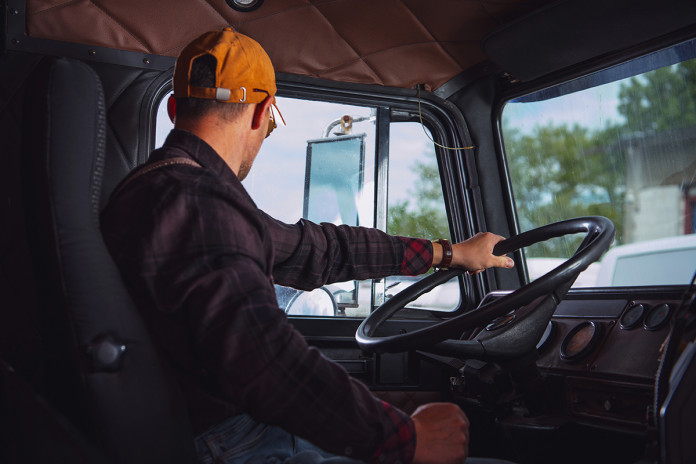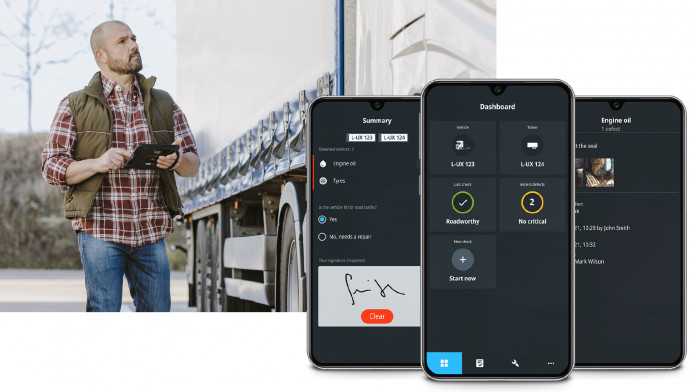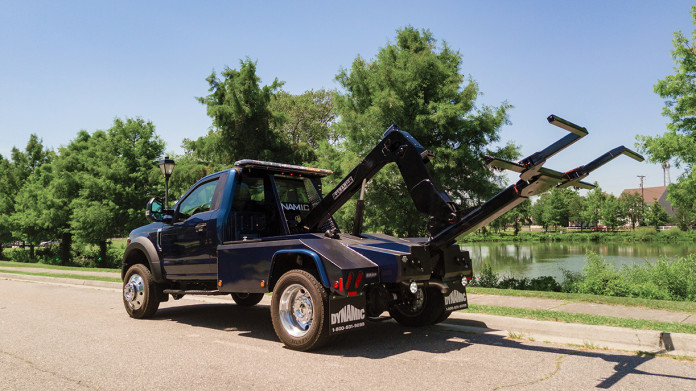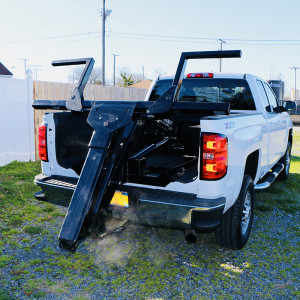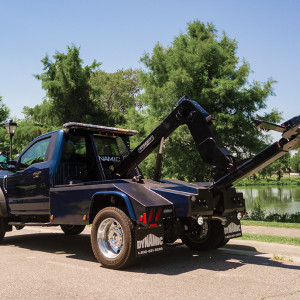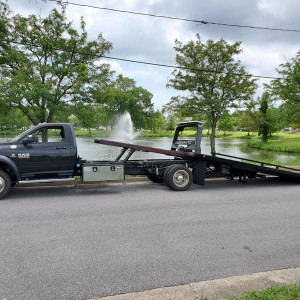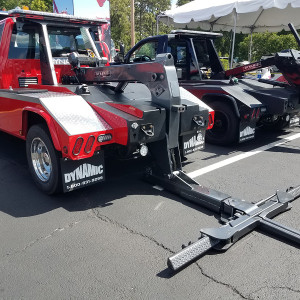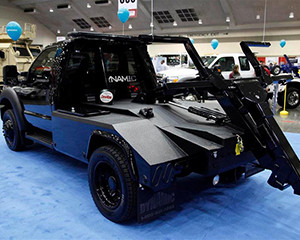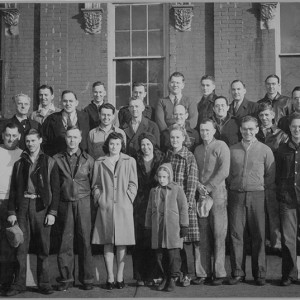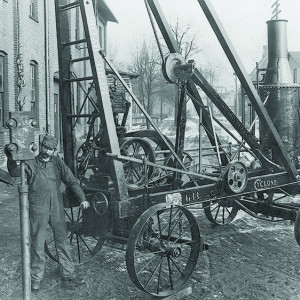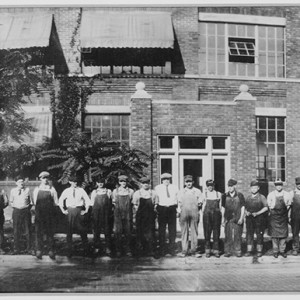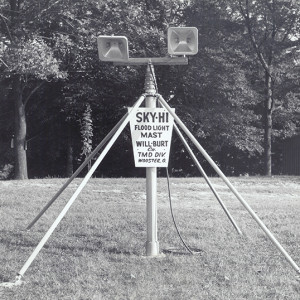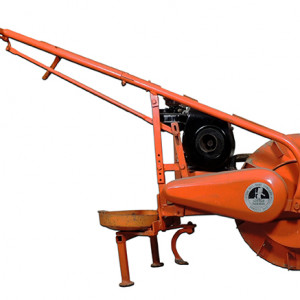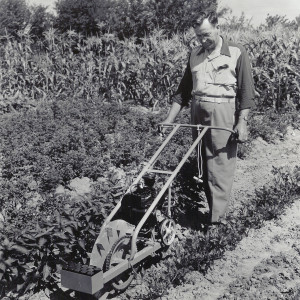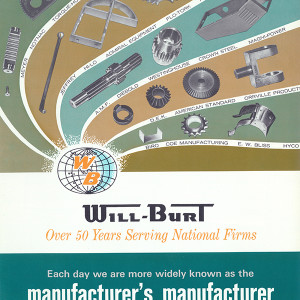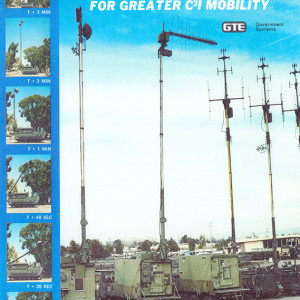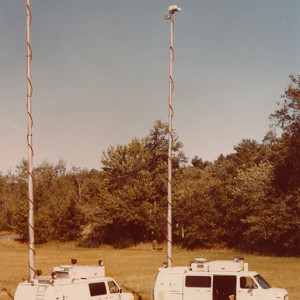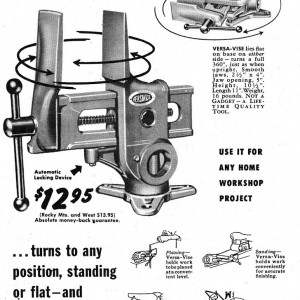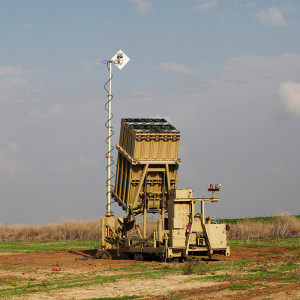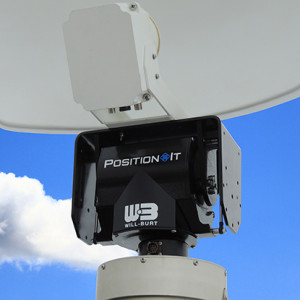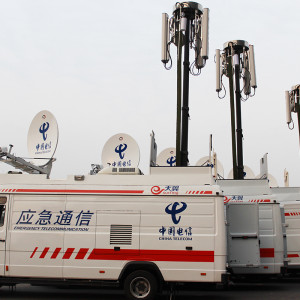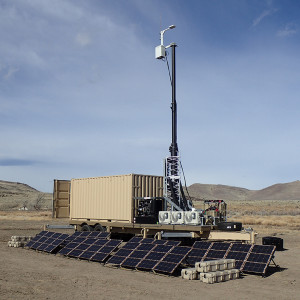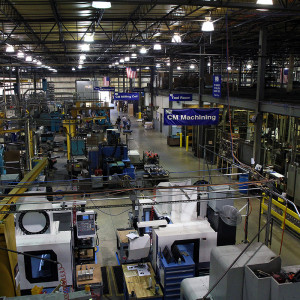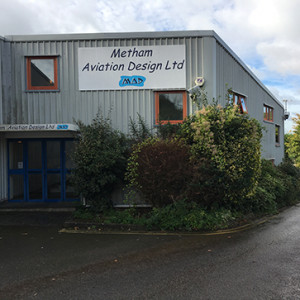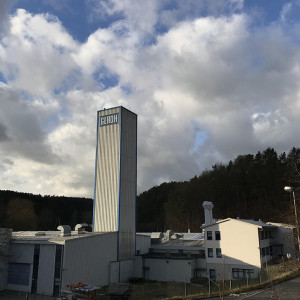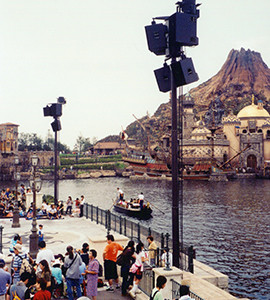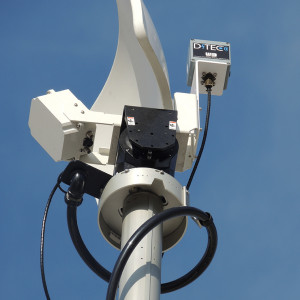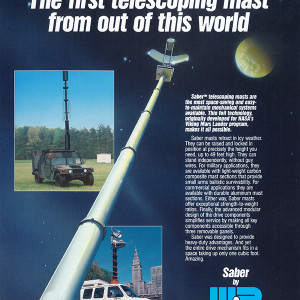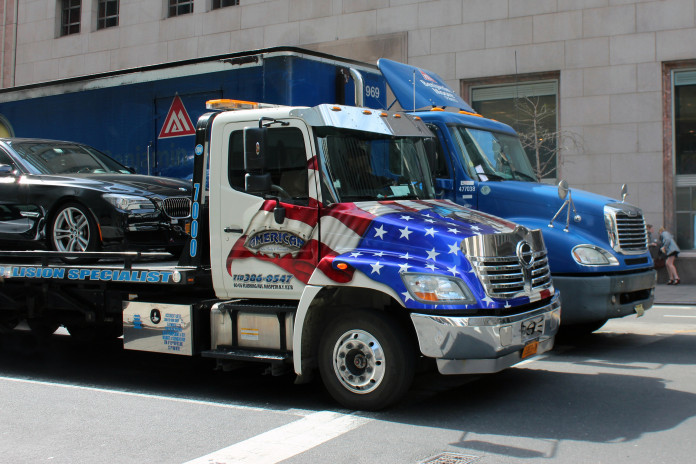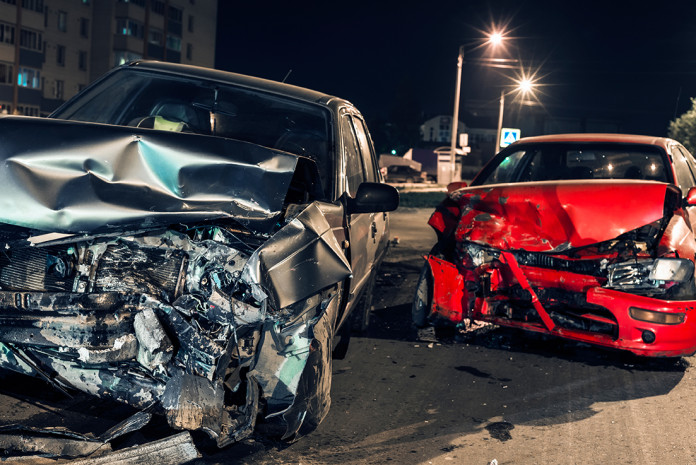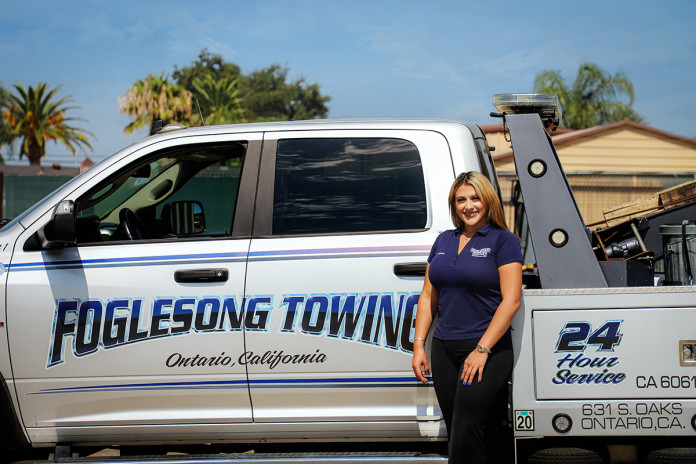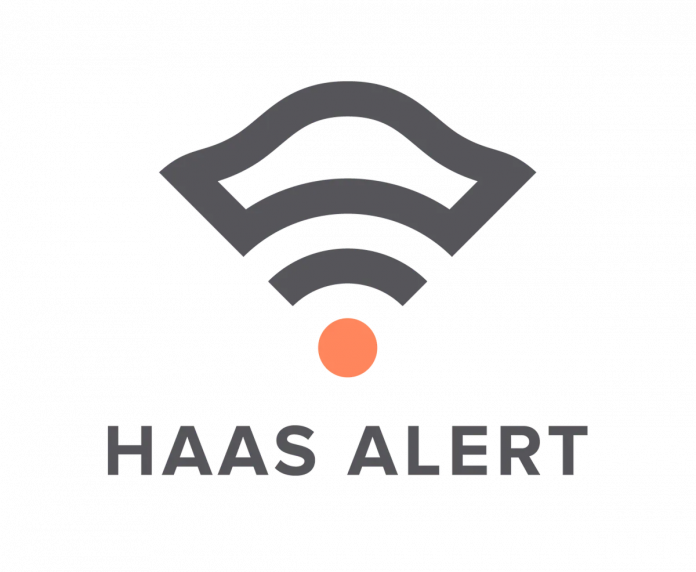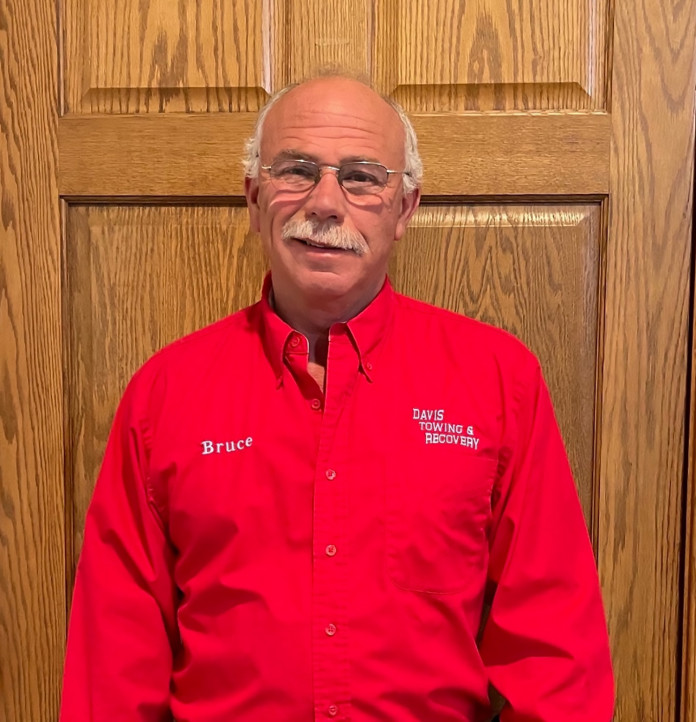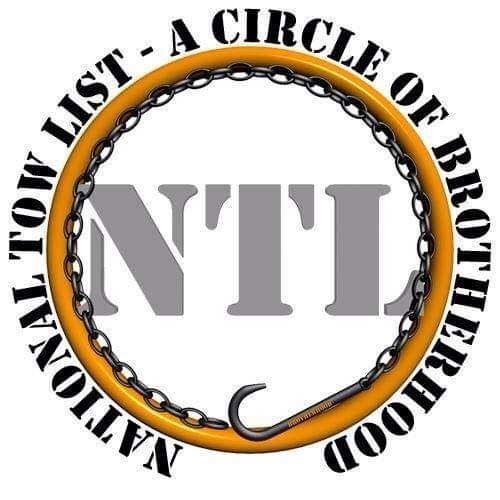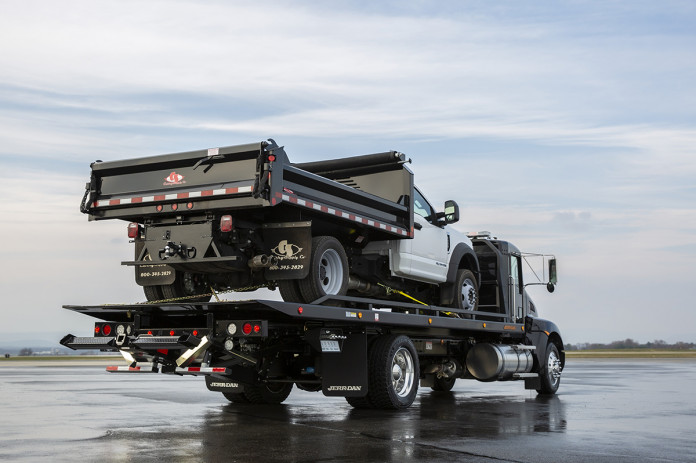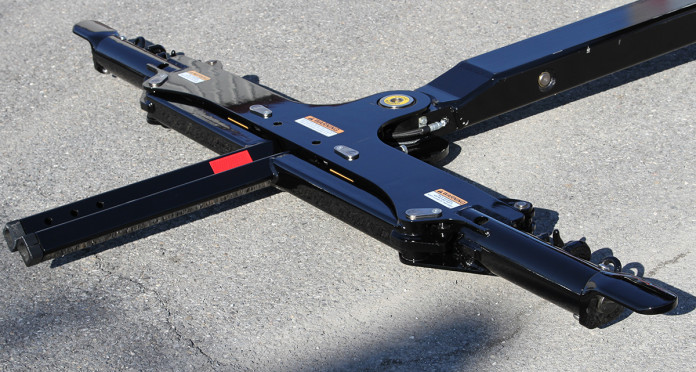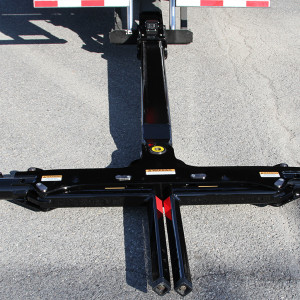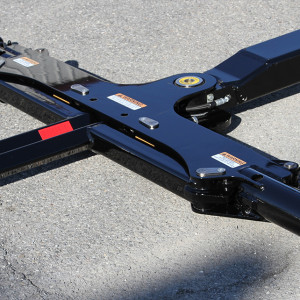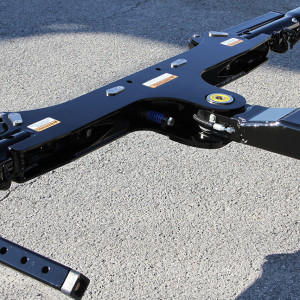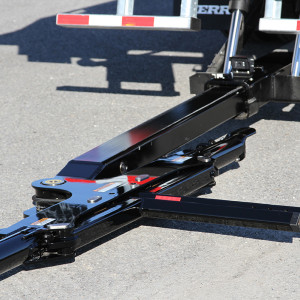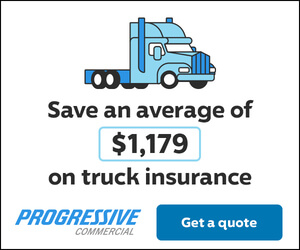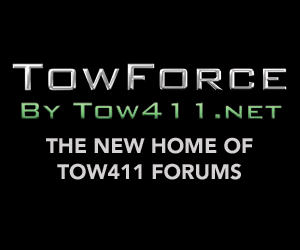Your Personal Invite to the Midwest Regional Tow Show
The Midwest Regional Tow Show, referred to as the Family Towing Affair, is planned with attendees in mind — including families. Children are entertained on Friday and Saturday evenings, allowing parents to attend show events.
The Women of TRAO hosts a luncheon featuring a “Safety Fashion Show” with new apparel. Male “models” are chosen from within our industry and represent towers, industry leaders and exhibitors who are willing to strut the runway while showcasing their unique personalities and attitudes.
The annual golf outing is a huge success as well as our seminars and demos. TRAO realizes the importance of training, safety and improvements for businesses in this industry so we plan many seminars during the show to provide extra intellect at a cost of only “FREE”!
The transportation industry is experiencing unprecedented co$t increa$e$
- Fuel prices have doubled
- Insurance costs are rising
- Purchase price of new trucks has increased significantly
- Maintenance costs and tires are up over 30%
The Heavy Towing Industry has seen some of the highest cost increases due to the size of heavy tow trucks in comparison to standard freight hauling tractors.
The rule of thumb is that the cost of owning and operating a truck is proportional to the size of the truck. A typical heavy duty wrecker weighs in excess of 50,000 pounds. In comparison, a fifth wheel tractor used to haul a semi-trailer is less than half that weight. Proportionately the tractor is less expensive to buy, will burn less fuel, and won’t eat up tires and brakes.
What if you could tow any heavy truck down the road with an efficient fifth wheel tractor like every other commodity of freight is hauled?
The Tru-Hitch™ Fifth Wheel Towing Device is the solution to the compromises that other heavy towing equipment struggle with
- No need to be a long wheel base
- No need to be front-end heavy
- Coupled and pivoting on a standard fifth wheel eliminates any pinch points while turning
- Able to lift 32,000 pounds and not be overweight on your rear axles
- Never taking weight off your front axle while towing
- Since axles are evenly loaded, tire and brake life are extended
- Cost to purchase, operate and maintain is a fraction of that of a heavy wrecker
Operation is simple and safe
Any fifth wheel tractor can couple to a Tru-Hitch™ in a similar way as coupling to any trailer. When the Tru-Hitch™ is attached to the truck being towed, it becomes the front section of a safe and legal semi-trailer.
With the connecting of proper lighting and brakes, you are now towing a truck that meets all federal motor carrier safety standards as a legal semi-trailer.
Because the truck in tow is being lifted by the axle or chassis by the Tru-Hitch’s™ twin booms, it is very stable and has a low center of gravity.
The booms are positioned under the truck to be towed or the truck being towed is winched onto the booms. The boom extensions are then attached to the truck to be towed making a rigid extension to support the truck/ Tru-Hitch™ combination as a semi-trailer.
For more information, visit www.truhitch.com or call us at 1-800-450-8659.
Saving money on fuel by using your technology
With current fuel prices and the price of your other vehicle maintenance products continuing to climb without the motor clubs raising their pay… It is more important than ever to be as efficient as possible. There are several things that affect your fuel and maintenance cost and several things that can help you.
For those of you who are Azuga or Towbook users it is time to let this service work for you.
1) Dispatching the correct vehicle to the scene:
a. As you know, sometimes the closest vehicle is not the best one to send depending on the traffic and can actually take longer and burn more fuel than one that might be further away. With Azuga and Towbook, not only can you see which vehicle closest but accurate arrival times is taking traffic into effect which allows you to pick the correct vehicle every time.
2) Safe driving and idling:
a. Using Azuga and Towbook allows you to quickly see and be notified of driving behavior issues. Inside Towbook, you will be able to see on your map the speed of every vehicle, ignition on/off as well as how long each vehicle has been idling
b. You will have a constant knowledge of driving events including speeding, harsh braking, idling and know every time your PTO is engaged. This helps you watch that the drivers are not burning fuel, wearing out tires and breaks or using your equipment for side work on your dollar.
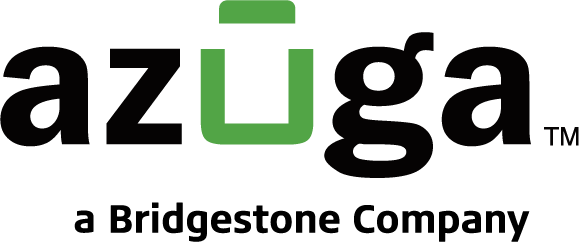 3) Getting maintenance done on time to reduce wear, tear, and more expensive repairs:
3) Getting maintenance done on time to reduce wear, tear, and more expensive repairs:
a. The maintenance report when properly set up will allow you to be notified every time before the oil needs to be changed, tires rotated, or brake inspected so you do not miss it and make the problem more expensive
b. Our system instantly notifies you when a check engine light comes on and sends you the code along with the diagnosed issue so you can get your truck back on the road faster.
c. This system will also let you upload parts lists, receipts, and warranties directly under each truck so you can easily see if there is warranty or money you can redeem with a maintenance issue.
Unfortunately, we cannot do anything about the people who are driving these prices up (you know where they reside) but we can help you limit your expenses related to these areas using a system that you hopefully already have. If not find out more at https://offer.azuga.com/towbook/
Step by step: How to make a DVIR vehicle inspection checklist for your tow truck?
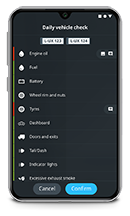 Making a checklist for your tow trucks is a great way to ensure that all your bases are covered during routine inspections. Not only will it help you stay organized, but it can also help you spot potential problems before they become bigger issues. By taking the time to create a vehicle inspection checklist, you’ll be able to rest assured that your fleet is in good shape. Here’s a look at how to get started.
Making a checklist for your tow trucks is a great way to ensure that all your bases are covered during routine inspections. Not only will it help you stay organized, but it can also help you spot potential problems before they become bigger issues. By taking the time to create a vehicle inspection checklist, you’ll be able to rest assured that your fleet is in good shape. Here’s a look at how to get started.
Note the Current Condition of the Tow Trucks
Noting the current condition of tow trucks is an important part of a regular vehicle checklist. By conducting a thorough inspection, fleet managers can identify potential issues early and make necessary repairs or replacements before they cause major problems.
There are a few key areas to focus on when inspecting fleet vehicles:
• Tire condition and tread depth: Tires are a critical component of any vehicle, and you should check their condition regularly. Look for signs of wear and tear, such as uneven tread wear or excessive tread depth.
• Brake pads and rotors: Worn brake pads can cause reduced stopping power and increased wear on the rotors. Inspect the pads for thickness and look for any signs of damage.
• Fluids: All fluids should be at the proper levels and free of leaks. Check the engine oil, coolant, power steering fluid, and brake fluid.
• Battery: A weak battery can cause starting and charging problems. Inspect the battery terminals for corrosion and clean them if necessary.
• Lights: All lights should be in working order, including the headlights, taillights, turn signals, and brake lights.
• Mirrors: Mirrors should be intact and free of cracks or other damage. They should also be properly adjusted so that the driver can see the road clearly.
• Windshield wipers: Worn windshield wipers can impede visibility, so it’s important to check them regularly. Look for cracks or other damage and replace them if necessary.
Set Out Regular Inspection Intervals for Tow Trucks
As a busy fleet manager, you know that maintaining your vehicles is vital to running your operation smoothly. Part of that maintenance is conducting regular inspections to identify and address any potential issues before they become major problems. But with so many other demands on your time, it can be difficult to track when each vehicle in your fleet is due for an inspection.
One way to stay on top of things is to establish regular inspection intervals for all your vehicles as part of a comprehensive vehicle checklist. By setting aside time each month or week to inspect your vehicles, you can catch small problems before they turn into big ones and keep your fleet running like clockwork.
Implement a Tow Truck Inspection Checklist
 A fleet vehicle maintenance checklist is a tool that can help you ensure that your vehicles are safe and roadworthy. It can also help you spot potential problems so that they can be fixed before they cause more damage.
A fleet vehicle maintenance checklist is a tool that can help you ensure that your vehicles are safe and roadworthy. It can also help you spot potential problems so that they can be fixed before they cause more damage.
When creating a fleet vehicle inspection checklist, there are a few things to keep in mind. First, make sure that the checklist is comprehensive. It should cover all of the major systems in a vehicle, including the engine, transmission, brakes, and tires.
Second, the vehicle checklist should be easy to use. It should be clearly laid out and easy to understand.
Third, make sure that the checklist is tailored to your specific fleet. This means taking into account the types of vehicles you have, the conditions they operate in, and the mileage they typically accumulate.
Some examples of headings and subheadings to include on a vehicle inspection checklist are:
• Exterior: Glass and windshield, washer fluid, bodywork, lights
• Engine: Oil level and condition, coolant level and condition, hoses, and belts
• Transmission: Fluid level and condition, shifting
• Brakes: Pads, rotors, fluid level
• Wheels and tires: Tread depth, tire pressure, wheel alignment
• Cab/interior: Seat belts, horn, wipers, mirrors
• Other inspection points: Battery, fluids (suspensions system, power steering fluid, etc.), exhaust, electrical systems
Make sure to go over the entire vehicle from top to bottom when conducting an inspection. Pay close attention to any areas that look worn or damaged. If anything looks out of place or doesn’t seem to be working properly, make a note of it. Newer technologies like mobile apps can make this a much easier and streamlined process.
Once you’ve completed the inspection, go over your findings with a mechanic or other qualified individual. They will be able to tell you whether any repairs or maintenance is needed. If so, they can also help you create a plan to get the work done.
Reoccurring Driver Inspections
It is important to have a reoccurring inspection by the driver as part of a vehicle maintenance checklist for a fleet because the drivers are the ones who are operating the vehicles on a daily basis. They will be able to notice anything that doesn’t feel right or has changed since the last time they drove the vehicles. This can help catch potential problems early on before they cause any major damage or become expensive repairs.
The driver’s inspection should include a visual check of the exterior and interior of the vehicle, as well as a check of the tires, fluid levels, and lights. They should also test all the controls to make sure they are working properly.
The driver’s inspection should be done daily, preferably at the beginning or end of the day when the vehicle is not being used. This will allow the driver to take their time, do a thorough job without feeling rushed, and complete their Driver Vehicle Inspection Report (DVIR).
Fleets face many dangers on the road, from accidents to mechanical failures. By having a regular inspection schedule and using an inspection checklist, you can help mitigate some of these risks. Our team at Webfleet has put together this guide to walk you through setting up your own inspection program for your fleet. We’ve also got a handy mobile app that digitizes your vehicle checklist, making it faster and easier to complete.
Contact us today at 886-224-9451 to learn more about how Webfleet a Bridgestone company can help make your vehicular inspections smarter, safer, and easier than ever before
Start up Company or Industry Leader, Dynamic Has Your Solution!
Established in 1982, Dynamic Manufacturing began its operations in an 8,000 square foot building in Norfolk, Virginia. TODAY THIS BUILDING IS NOW MORE THEN 60,000 SQ FT!!
The creators and executive team at Dynamic Manufacturing were the innovators in the repossession and towing industry. Calvin Russ, the company’s founder, started Dynamic Manufacturing by sketching out an idea to design a wheel-lift system that would be easier, faster, and safer to operate than what was available at the time. His creation, the Original Self-Loading Wheel-Lift, was born and Dynamic Manufacturing consistently worked to perfect the Self-Loading Wheel-Lift. Today, the Self-Loading Wheel-Lift is the most sought-after technology in the industry.
The Original Self-Loading Wheel-Lift from Dynamic was introduced in 1983. The Self-Loading Wheel-Lift was repossessing vehicles with its 90 degree hook up in 10 seconds and the driver never had to leave the security of the cab of the truck. The word of how well the new Self-Loading Wheel-Lift worked spread like wildfire through the industry. The Virginia Department of Transportation commissioned Dynamic to build a unit for towing and recovery on the bridges and tunnels in Norfolk, Virginia. The Dynamic 601 BTW twin line, with a hydraulic extend-able recovery boom was put into service and is still the equipment of choice today. Soon after, major cities like Chicago and New York added the Self-Loading Wheel-Lift to their fleets as well. Dynamic grew as the industry grew and the demands for stronger, improved, and more diversified Self-Loading Wheel-Lift equipment was needed.
The company’s mainstay was the 601 series with a 4,000-pound wheel-lift. This unit has now been bypassed with the 701 with its 5000lb wheel-lift fully extended, and optional Neg-Power tilt. With the 701’s impressive array of standard equipment, it is available in four different configurations: the B, which is the basic unit with the 5,000 pound wheel-lift; the BDW, a bed with a deck winch; the BSW, a bed with a recovery boom and a single winch; and the BTW, a bed with a recovery boom and two winches and numerous optional equipment is available to qualify for city and state towing contracts.
The present owners of Dynamic have over 40 years’ experience in the towing business. AND NOW OVER 10 years in manufacturing, engineering, and bringing new products to the industry. They understand what the towers need and want. Safety is an especially important issue. Dynamic offers the in-cab wheel-lift controls for added safety during highway tows and the ever-dangerous repossession. Not one tow vehicle is the same, Dynamic is a small, customer care company where you can reach the owner as well as all the departments to solve a problem with your Dynamic equipment. Their parts department is always stocked with a vast amount and a variety of parts. A call to the parts department and quick ship out procedure ensures your downtime to an absolute minimum. Dynamic listens and is always open to suggestions and changes needed by the end user.
The 701 light duty and light/medium duty truck series and the 801 medium duty truck series are also available in the four different configurations. The 701 series offers a 5,000-pound wheel-lift and is also available with optional winch or negative tilt. The 801 series is the truck that Dynamic designed for the Virginia Department of Transportation and is available with an 8,000 pound wheel-lift. Dynamic Manufacturing totally reengineered the 801 series with an 8500LB wheel-lift and 16-ton recovery boom to meet their needs!
Dynamic Manufacturing is continuing to broaden its product line. Dynamic was the first to manufacture rollbacks with a Self-Loading, Independent, Wheel-Lift. The traditional “L” arm wheel-lift is offered as standard equipment. As time progressed, methods of towing vehicles and trucks also required more diligence when towing. Dynamic saw the need to manufacture equipment that would help the tower be able to not only perform his job safely, but also with the delicate care needed to tow the present and future vehicles and trucks. The latest products introduced and now manufactured by Dynamic are the RADIUS Rotator Carrier, Slide-in Units, and the Stealth Wheel-Lifts. Dynamic offers a full line of products that can transform your pick-up into a wrecker at a low cost, and it makes for the perfect setup for low clearance garages! The latest addition to the lineup is the Dynamic Service vehicle. Make sure you visit www.dynamicmfg.com and check them out for yourselves.
Dynamic has distributors located throughout the United States, England, Australia, Ukraine, Russia, Scandinavia, Sweden & Baltic States.
They are always looking for additional equipment distributors, parts distributors, and repair facilities. Please contact Dynamic Manufacturing for more information.
I’m Proud of Our Podcast
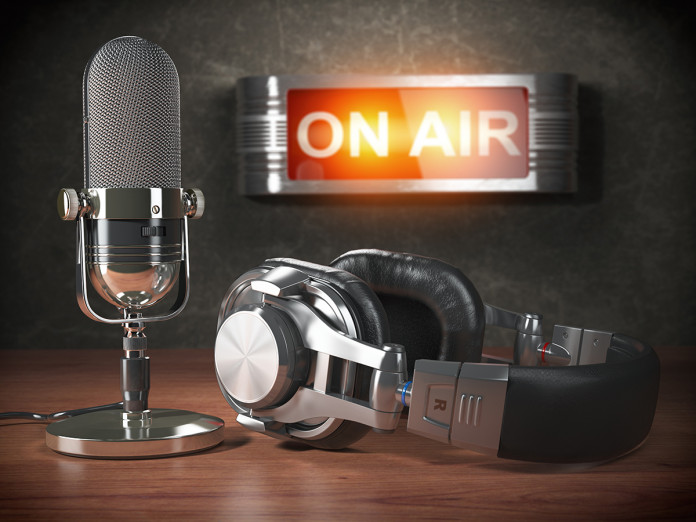
It’s my pleasure to be a small part of the fastest-growing podcast produced by a Media Company that represents the Tow Professional Magazine and the fine folks of the towing and recovery industry. Back in 2021 Darian Weaver, the President and Publisher of Tow Professional, and I started a discussion about doing a podcast in which all members of your team could benefit, no matter the age of the listener. We didn’t want anyone to worry about off-color language just in case your 9-year-old son was riding in the truck while the podcast was running. For the first few months, Chuck Camp, the Producer of the podcast, Darian, and I funded the project ourselves.
By the time we had completed the Florida Tow Show, ToBy the time we had completed the Florida Tow Show, Towbook was our guest. Tom Bacon and Dan Smith did a wonderful job explaining that their company supported companies of all sizes. Personally, I liked having no contract or set up fee requirements as well as the 24/7 FREE SUPPORT. No matter where you get your podcasts, all our episodes are available on archive. So, at your convenience, you can listen “live” or “later”. On the episode with Tom and Dan, the tail-end of that episode introduced our dear friend, Tim Smith, from Azuga who shared a warning to drivers which explained the importance of having a camera inside the truck to prevent being wrongfully accused of a dig or dent that could have already been there.
One of my all-time, favorite episodes showcased Ron Pullen from R & P Recovery Consulting Service. Ron is a knowledgeable guy as well as a man of faith. All three of us: Ron, Darian, and I have something in common, because we, “Stand for the Flag and Kneel for the Cross.” There are some other episodes that you need to hear.
Don’t miss our most educational episode on Hybrid Electric Vehicles training by Dalan Zartman from Energy Security Agency. Whether you drive a Jerr-Dan or not, I guarantee you will find Bob Nelson, the Vice President of Jerr-Dan from this 50-year-old company to be very informative and down-to-earth. One day, I hope to meet Bob in person. I know you’ve heard of the next two podcast guests, Brian Riker, Your DOT Guy and Dan Messina. If you’ve read their stuff or heard them at all, you know they were wonderful. So, you don’t want to miss their episodes.
Chris Anderson, the Vice President of Tow Mate, and James Lewis, of course, were guests as well. It would be tragic if you missed hearing those episodes. And, then there’s Linda Unrue, the Tow Woman of the Year, was also a guest. We also had an episode about “Celebrating Women of Towing”. What a wonderful celebration it was too! Wait until you hear those women answer question after question, from ladies such as: Michelle Sukow, Gay Rochester, Geri Roskopf, and Linda Unrue as they talk passionately about this great industry. Another episode that you need to listen to is the most “family-friendly” tow show, the Midwest Regional Tow Show being held in Mason, Ohio. All the details and opportunities are listed so you can plan to attend.
It’s our pleasure to announce that we have a new podcast sponsor. They’re from Recovery Billing UnLimited. The head man, Bob Foakette and his granddaughter, Jade, were on one of the episodes. Check out their episode. Next month, I will announce our newest sponsor who came to us because they saw what we, as an industry are doing, and wanted to lift the spirits of all towing and recovery people, no matter their faith, creed, nationality, or political viewpoint.
Bill Johnson from Hampshire Towing and T& T Towing who is running for State Senate in the great state of Massachusetts graced us with an episode. Beloved by many, it’s a consensus that soon all of us, including Bill’s 70 employees, will be calling him, Senator Johnson.
I could go on and on talking about every episode that we’ve done since 2021 because there’s been a bunch of them. I’m fortunate and proud every week to be a small part of this great industry with some of the kindest and most generous people that help others in their community.
As Darian closes every podcast, “Thanks to the readers and clients.” I’m proud of the magazine that brings the latest in technology, products, and services to grow your business and make your family more profitable. Remember to listen to our Tow Professional podcasts wherever you get your podcasts. Don’t forget that we are available on ALL platforms.
See you on the next podcast.
The Will-Burt Company
The history of The Will-Burt Company, today, known at the world’s leading producer of mobile elevation products, can be traced back to 1894. It all began when two brothers, Burton, and John Cope, sought a better way to make a living by opening a general repair shop for farm machinery. By 1900, the business had grown by adding the Cyclone Drilling machine (water and oil drilling rig) to their offerings along with a new partner in William Tschantz. It was this year that the business moved to Orrville, Ohio, a bustling railroad town in the farming heartland, where the business remains today.
Will-Burt went through many changes in the first two decades of the 1900s. John Cope passed away leaving Will and Burt (yes, that is where the name came from, but it did not happen until 1915) to manage the business. The entrepreneurs were prolific inventors. Burt patented a device that moved car chassis from train box cars to auto dealerships for final assembly (in the days before the assembly line). Will earned several patents related to mechanical farm machines and later in life he developed patented meat grinders for use in grocery stores – some of these designs are still used today! Unbelievably, the meat grinders came full circle and Will-Burt’s manufacturing services division makes parts that are used in these meat grinders for the company that holds these patents. One other interesting product that was launched in the era was a carpenter’s vise, later marketed as the Versa-Vise. This was a unique vise that allowed a user to mount it at different angles for any job. Will-Burt manufactured this into the 1980s then sold it to a former employee that still offers them for sale today. Collectors seek the original models.
The Will-Burt Company was incorporated in 1918. Will Tschantz had departed and Ed Baer, Burt Cope’s nephew had joined the business. In 1920, Burt Cope cut a deal with a company in Pittsburgh to make automatic combustion regulating equipment used in coal burning power plants and on steam ships as a contract manufacturer. Will-Burt went from a company of less than twenty people to over two hundred in a brand-new factory on Main Street in just a year. Even though the country was struggling through the Great Depression, Will-Burt expanded into making coal stokers that were used in businesses and homes – you might remember seeing one of these noisy and scary contraptions in your grandparent’s basement, especially if you grew up near coal country. The product line was expanded into furnaces and even water heaters. As natural gas and fuel oil replaced coal for heating in homes, sales of these products shrank to the point where the company closed the line down in 1995.
Going back to the middle of the 20th century, Will-Burt like so many other companies in the USA, supplied products and components for the WWII war effort. The top-quality metal working and painting skills and equipment that Will-Burt possessed earned the company the prestigious Army / Navy “E-Award” for production excellence.
Shortly after the conclusion of the war, Burt Cope passed away. Ed Baer was now CEO. Along with his son Bill Baer, they continued to look for new opportunities to expand the business. The post WWII housing boom helped drive coal stoker sales. Consumerism was taking off and Will-Burt created several products to tap into this. In 1949, Will-Burt’s Little Farmer cultivator was released. A clever walk behind tiller type product that was designed to accept many different implements such as a plow, blade, and even a seed planter. The carpenter’s vise was reworked and branded the Versa-Vise in the 1950s and was sold via mail order and through hardware stores for $12.95 ($140 in today’s dollars).
Will-Burt looked to expand its contract manufacturing business that continued to focus on metalworking in the 1960s. Will-Burt produced parts and components for AMF Bowling, Flo-Tork and many local businesses. We continue to produce parts and assemblies to this day for the construction equipment and defense sectors.
A decision was made in 1970 to acquire a small local business for its production machinery. This decision would change the future course of Will-Burt (even though no one realized it at the time). The tool and die shop that was acquired also made pneumatic telescopic masts that could elevate radio antennas and lights. Sales of the telescopic masts were minimal throughout the seventies and the business was a drag on profits, but technology was changing rapidly and would lead Will-Burt in a new direction.
The 1980s was the most turbulent decade in Will-Burt’s history. The decade starts off with Will-Burt winning a contract to supply a telescopic pneumatic mast for the US Army PATRIOT program. The masts elevate radar and communications equipment for the missile defense system. The PATRIOT system has gone through several updates over the years, but Will-Burt still provides the masts for the system. It was during this time that the commercial need for a 42-foot telescopic mast for use in the burgeoning live broadcast news industry developed. Will-Burt had just the system in the ultra-reliable and now iconic 7-42 non-locking pneumatic mast. This mast was used by nearly every news van in the US to elevate a microwave dish that would transmit a live video feed back to the news station. Most news stations have now transitioned to cellular video transmission technology, so the Will-Burt 7-42 mast is no longer needed in the live news field – but it was a great 35-year run!
1985 was the year the good times came to a screeching halt. Bill Baer, who had been CEO for more than 20 years and had worked for the company since 1936 died unexpectedly. Mr. Baer was the last Cope family member to run the company. Also at this time, the company was defending itself against a frivolous lawsuit that drained resources and caused the Board to resign. Bankruptcy looked imminent; however, the new president who had been with the company for 10 years had a plan to save the company. All outstanding shares were purchased by the company by mortgaging everything available and ownership was turned over to the employees as an ESOP. The next few years were difficult – changes had to be made, modern equipment needed to be purchased to compete and employees were retrained to succeed. By 1990 a new culture of employee ownership and continuous education had taken root that is flourishing today.
The 1990s is when modern Will-Burt starts to take shape. The newly trained and empowered employee-owners start to look for ways to expand the business. It is time to cut loose products from the past that no longer add value such as the coal stoker line. New products are developed such as mobile light towers and more powerful pneumatic masts. Money is invested in sales and marketing and light towers become Night Scan and military masts become Saber then Stiletto. The welding, machining, metalworking, and painting skills of the workforce are used to make GSA registered file cabinets and storage containers for the US government and their contractors. Will-Burt achieves ISO 9001 certification for its Quality Management System. By the end of the decade, Will-Burt starts to focus on exporting products into European and Asian markets.
The dawn of the new millennium saw Will-Burt expand even further under a new CEO. New elevation product lines are added by an expanded engineering department, plant expansions with the doubling of Orrville’s footprint, and continued investments in modern machines and employee training. To help accelerate the growth of the company, acquisitions are made to expand the company’s reach and product offerings.
A company was purchased in Tulsa, Oklahoma that added telescopic lattice towers and elevation trailer integration capabilities to the portfolio. A company was purchased in Waischenfeld, Germany, GEROH, that added cable driven masts, perfect for harsh environments, and spindle driven telescopic masts that are the most precise in the world – exactly what you would expect from a German company. This acquisition gave Will-Burt an excellent launching point for further expansion in Europe. Later, a company that makes pan and tilt positioners, often used on top of masts to move antennas, was purchased in the UK. All the while, sales were expanding in Asia and the Middle East.
Will-Burt’s rich heritage of manufacturing quality products, re-invention, and investment in our employees has led us to where we are today, a company of three hundred employee-owners that are guided by our 7th CEO, Richard Lewin, whose strategic vision focuses on integration, intercompany and internationalism. Will-Burt operates as one company that’s vision is to Elevate Innovation and we look forward to our next one hundred years.
Selling Your Business
If you have been following my business over the past few articles, you can see that I have had a lot of exposure in the towing industry. Over the past 25 years in towing, I have met thousands of towers and worked with more owners than I can count. Its an industry that I knew someday I would leave but I was not looking forward to it because I really enjoyed working with the towers.
When I talked to owners, I would tell them if you are getting out of the business you have to prepare for it. Not only who will take over the business, but what will you do once you retire. In today’s world it is getting harder and harder to retire and get out of the business. In a lot of cases, you became a tower because a family member left the business to you. Over the years the business provided a good lifestyle, and you were able to provide a good life for the family. Not so easy today, you face things like:
1. Price of gas going up
2. Can’t find trucks to buy
3. Can’t find drivers to drive the trucks
4. Customers are too demanding
5. Can’t raise prices and compete
6. What is my exit strategy
7. Good employees are hard to find
As I mentioned your children have other interests and towing does not excite them. Outside investors don’t know enough about the business to take a chance on it. If you are one of the few that made it big that is, in itself, a problem. People who know the industry don’t want more headaches and are looking for ways to get out of towing themselves.I have a good friend who called me up just last week and asked me if I know of any buyers; he was ready to sell. I said I would ask around and I needed some info on his business.
He said here is what he has:
1. 32 trucks
2. In debt on half the trucks
3. 4 locations all over Texas
4. Multiple locations
5. Multiple rotations
6. Short of people
He grew a great business, but it will be hard to sell. If you are in multiple cities, you must know their rules and regulations. If you have multiple locations, you must fight the competitors. If you are lucky enough to win the contracts, then you worry about them for the next 5 years.
I remember when I first got in the business 25 years ago. It was fun. Things were not as expensive as they are today. You went to tow shows and partied with other towers, and employees were easier to find. City rates were fair, but so was the price of equipment you needed to run the business.
As I mentioned earlier, I would help tow companies prepare for retirement by helping them set up their company to sale and to prepare them for retirement. I’ll tell you right now – do not retire until you know what to do with yourself.
 When I sold my company, I was not ready. I was working with a friend of mine who owned a large tow company in a suburb of Dallas. He needed a location in Dallas, and we were about to form a partnership so he could have a location there when out of the blue a stranger walked into my office and told me he wanted to buy my company. I did not know who he was, but he knew everything about me. He even knew what kind of sprinkles I liked on my ice cream. I was impressed. I went back to my friend and told him I could not be his partner because someone just offered to buy my company.
When I sold my company, I was not ready. I was working with a friend of mine who owned a large tow company in a suburb of Dallas. He needed a location in Dallas, and we were about to form a partnership so he could have a location there when out of the blue a stranger walked into my office and told me he wanted to buy my company. I did not know who he was, but he knew everything about me. He even knew what kind of sprinkles I liked on my ice cream. I was impressed. I went back to my friend and told him I could not be his partner because someone just offered to buy my company.
My friend, knowing the kind of company I had said he would buy my company. What a great position to be in. My friend told me if I sell to him it must be closed within 30 days. I said I would sell to him, but it left me no time to prepare. Things I taught tow companies to do before selling I did not do. Things like:
1. Notifying my good customers
2. Getting the books to look good by selling off equipment
3. Preparing my employees for the sale. These people were my family and now I was leaving them
4. Wrapping up some loose ends that I was working on
5. Preparing myself for retirement
Everyone thinks they are ready, but they are not. Because my sale was quick, I was not prepared to not go to work. Things I left unfinished would remain unfinished, and the people I would see every day were no longer in my life. Not to mention, I now had a bunch of money that I did not know what to do with, or how to spend it. I know you think these are nice things to be faced with, but I assure you they are not. My wife and I ran the business so we were use to working together. The first three weeks running the house together was a disaster. You can only watch so many reruns of Gilligan’s Island to realize retirement was not for me.
I was happy to be going to work because it would get me back into the towing industry. I tried consulting with tow companies, but that did not excite me. Then I remember when I was doing seminars at tow shows, I identified a problem in the industry that I could fix. I wanted it to help the tow companies, motor clubs, and the consumer. I wanted it to be priced right so that everyone would benefit.
In next month’s article I’ll tell ya all about it.
It was only for a minute…
I realize that in my job, I see a lot of doom and gloom and negativity – and that makes more jaded than most about truck and automobile crashes, industrial or workplace incidents, or personal injury scenarios – but I’m really seeing a strong trend here and I’d like to help prevent more of the same.
First – please note that I didn’t use the term “accident.” These aren’t accidents. They’re crashes, wrecks, incidents, and even catastrophes, but they’re not “accidents.” The only “accident” I can fathom is where lightning strikes a tree and it falls on your house or car. There’s no way to prevent something like that, and we just have to deal with it. In every single one of these crashes, wrecks, or incidents, they occurred because someone made a mistake and injured themselves or others.
A trend I’m seeing involves drivers – usually of a commercial vehicle – either miss a turn or hit the shoulder for some other reason. It may be to take a phone call, read and answer a text, or check directions. It’s better to pull over and answer that text or look at your maps program, yes, but it can also wait until you can pull off into a parking lot or take an exit ramp. I applaud people for not texting while driving or interacting with their phone while looking up directions. It seems to be what happens next that causes the most problems – the driver then backs up on the shoulder, or backs out into the road, in order to take that turn they missed or to turn around…and WHAM. They hit someone or someone hits them.
We think, it seems, that because we’re only doing something for a minute or a few seconds, that it won’t cause any issues. We also don’t realize that no one ever plans to have a crash or wreck. Who would? You’re making a to-do list, and you drop in, go to the store, go by the dry cleaners, stop at the post office, and at exactly 10:13 am, a kid will kick a ball into the street and then go running after it, and I’ll swerve and run my truck into a pole. Nope – not one of us has ever planned to have a wreck.
There are two very high-profile groups of people that are being involved in the crashes I’m talking about, and it’s because both groups deliver or pick up things and follow written or GPS-derived directions: Tow operators and truck drivers. Tow drivers, especially, have a job that centers around getting directions and following directions, and going to a place you haven’t driven to before happens several times each day. You miss your turn, whip off the road and grab the shoulder, check your phone – and what happens next will make or break you. People jump back into traffic without looking, start backing up and hit someone or some thing, or stay in place too long and get hit.
I can give you a list of at least 20 scenarios that I’ve seen recently that would drive home my point on all of this, but I think you get it by now. If you miss a turn, don’t slam on your brakes and pull over, and then back up to catch the turn. Keep going, find a good, safe, and legal place to turn around, and then take the turn you missed. If you get a text, it can wait. It can wait until you’re in a parking lot or other safe area to pull into. Following these simple guidelines, I feel can reduce these horrific crashes by 95%.
One last thing – most people I know have never been sued. It’s a devastating situation to be in, and one I wouldn’t wish on anyone. Individual employees get sued during crashes like these because you have absolutely ZERO, NADA, NO protection under the law through your employer if you’re negligent. You don’t have protection under your employer’s umbrella (insurance, management, pay, benefits) for anything that you do, actually. Ask someone who has been in a crash like I’m describing, especially in a commercial vehicle. Everyone is named in the suit.
Everyone. You, your company, your company’s insurance company, the manufacturer of your truck, the dispatch service that sent you to where you were going – everyone. And guess what? Everyone on that list, except you, is covered by insurance and legal precedence. Everyone except you. You’re on your own. I can’t imagine having to explain to my wife that we’re going to lose our house and her new car because I did something stupid in my truck at work and caused a crash that hurt or killed someone. I promise you, though – that’s a conversation you’ll have to have. Run that one by the wife or husband, just for reaction.
Laura Acosta – Perseverance is KEY!
Becoming a business owner was never in my plans, especially not as the owner of a tow company. I graduated from California State University at Fullerton with a bachelor’s degree in communications and psychology. The weekend of graduation my father offered me a job at his towing company, and I accepted the offer since I did not have a job at the time. My plan was to stay there for only a year and then go back for graduate school. Well, here I am seven years later operating my own tow company.
In those seven years, I learned how to be effective in handling all the challenges that come with owning a towing company especially from the perceptive of being a woman in this industry. If someone were to have told me seven years ago that I would run my own shop, I would never have wanted that challenge or even have had the confidence in myself that I could be capable of doing so. As my father says, “You have to have tough skin and a stomach made of leather to be able to handle this industry.” As a woman, that behavior does not come naturally, and there’s a lot more that must go into developing that type of character.
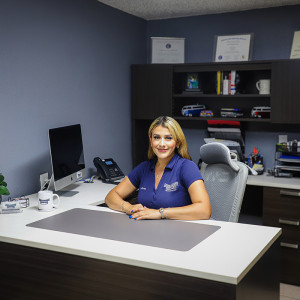 I come from a family that has an extensive history in the industry. My grandfather migrated from Mexico back in the sixties with my grandmother and their children. Then he started his tow company in 1978 with one truck. Forty years later, because of the ambition of his sons and key business partners, that company is one of the biggest tow companies in southern California. Thus, the pressure to live up to that name can be overwhelming at times. I must say without my core group of best friends, the support of family, and my faith in God there is no way I could have gotten through it.
I come from a family that has an extensive history in the industry. My grandfather migrated from Mexico back in the sixties with my grandmother and their children. Then he started his tow company in 1978 with one truck. Forty years later, because of the ambition of his sons and key business partners, that company is one of the biggest tow companies in southern California. Thus, the pressure to live up to that name can be overwhelming at times. I must say without my core group of best friends, the support of family, and my faith in God there is no way I could have gotten through it.
Women in this industry are not uncommon, and I have been inspired by them including one of my female drivers who operates a tow truck; but I feel that there is still much more to be done to find acceptance and to be integrated into this male-dominated field. This journey has not been easy; there was so much work I had to put into my own personal growth before I could feel confident in making decisions and introducing ideas into the business that would not have been considered before. I had to gain confidence in my decisions. It was vital for me to master my emotional intelligence to be successful and to learn not to take anything personal. I also knew that I really had to learn the nature of the industry that meant understanding the basic functions of a tow truck, geographical locations, equipment, logistics of towing, etc. I became certified by the California Tow Truck Association (CTTA). This certification included a three-day course of physical and educational instruction. Here I learned how to roll over a vehicle with proper chains and moving the correct cables. It was intimidating but I knew that for me to gain some credibility I had to know what I was talking about. This is a very instrumental point that we may not have to get into a tow truck and tow but at least be knowledgeable in the area. It has gone such a long way for me, I am able to understand what drivers are talking about, even with mechanics. Getting involved in the industry as much as possible is key. I have also joined the Women of the Towing & Recovery Association of America plus local business groups such as city chambers, etc.
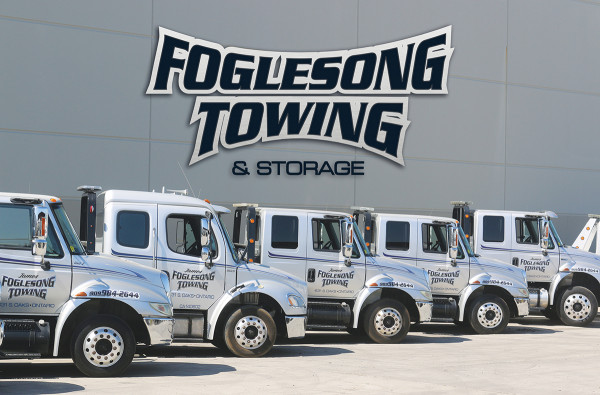 Working in this industry takes a lot of hard work and time. It is the nature of towing that it is very demanding in time and dedication, and one must be willing to make the requisite sacrifices. This took some time for me to accept, but as I have learned more about the business, I’ve grown to love it and have become so invested that at this point it doesn’t even feel like I’m working.
Working in this industry takes a lot of hard work and time. It is the nature of towing that it is very demanding in time and dedication, and one must be willing to make the requisite sacrifices. This took some time for me to accept, but as I have learned more about the business, I’ve grown to love it and have become so invested that at this point it doesn’t even feel like I’m working.
With the grace of God, I have been blessed to have an abundant number of resources. My family and key managers at their business have given me support and guidance, and they have never viewed my gender as an issue in working in this industry. I continue to learn all aspects of the business from purchasing of equipment, applying for city contracts, managing human resources, and most importantly establishing a respected name for the company and myself. There are certain points of advice that have stuck with me and have helped when making decisions. For example, my uncle has imbedded in me to always abide by my word, i.e., if I commit to a deal—no matter if I hear of a better one, since I have already given my word, I must stick to the original plan. Another adage from my father is that “in life it is not about what you have but who you are.” I’ve kept this advice in mind in how I treat my employees or people with whom I do business.
Yes, I do not fit the description of a typical tow owner, but that is okay. I bring my own distinctive way of doing business. I may not always be right or make the best decision, but that is part of the journey in growing to become the best possible employer and recognizing that my people are my most important resource. I make it known to my employees that without their hard work and sacrifices, the business is nothing. Employees are such an essential part of the success of the company. I try my best to make them feel that they are part of the team. Taking time to speak with them, asking about their families, working with them when unexpected issues arise, etc. are all key factors in developing a healthy professional work relationship, but the true test of caring is being there during their more challenging times. That is where trust, loyalty and respect are gained.
As an innovative, progressive leader my purpose in continuing with a perseverance mindset in this industry is to show my younger sisters and any other interested women that with hard work, faith, a core support system, and most importantly, the dedicated passion to succeed, it is possible to make a place for yourself in this or any related career. I hope my story inspires women just as I have been inspired by all the other women in this industry
#NoMoreNamesOnTheWall
HAAS Alert and the International Tow Museum are once again teaming up to put #NoMoreNamesOnTheWall. The campaign to prevent struck-by collisions is back this year after an enormously successful premier in 2021 which helped to raise over $5,000 to help families of fallen tow operators.
The #NoMoreNamesOnTheWall campaign was launched last year in partnership with the International Towing Museum and the Survivor Fund. In order to help towers and families of towers, HAAS Alert is committed to donating to the Survivor Fund for every demo of Safety Cloud and activation of Safety Cloud, ensuring that families affected by line-of-duty deaths benefit just from towers learning about the power of digital alerting protection in the field.
With this campaign, HAAS Alert aims to raise awareness of Move Over laws and encourage adoption of life-saving digital alerting technology. Combined with the public’s help, we can begin to make tower struck-by incidents a thing of the past, and work towards to ultimate goal of adding #NoMoreNamesOnTheWall.
If you would like to be a part of this life-saving campaign for towers, you can visit haasalert.com/nomorenames. From there, you can read more about the campaign and schedule your custom demo.
Upcoming Shows
HAAS Alert will be on-site at major tow events throughout the fall. Come visit us to learn more about Safety Cloud for tow fleets!
- Provincial Towing Association of Ontario Tow Show and Sale (Ontario, September 16-17)
- American Towman ShowPlace – Las Vegas (Las Vegas, September 21-23)
- Tennessee Tow Show (Chattanooga, October 7-8)
Bruce Davis of Davis Towing & Recovery, Rushville, IN, will be honored by the Towing & Recovery Hall of Fame in Chattanooga, TN.
Bruce Davis of Rushville, IN, will be inducted into the International Towing & Recovery Hall of Fame at a special ceremony here scheduled for October 2022.
Davis was singled out, along with nine other outstanding towing and recovery leaders in Australia, France, Japan and the United States, for recognition due to his leadership and innovation in the towing industry.
The owner of Davis Towing & Recovery Inc. has built his company to be one of the most prestigious towing and recovery companies in the state of Indiana. Davis bought the company from his dad, Bob Davis, also a towing expert, and has invested 35 years in the industry. He is respected by his peers, competitors and community. He is considered an asset to the towing community in central and southeast Indiana.
Davis’ accomplishments include building towing equipment for himself and other towing companies, and using his wreckers in the Indianapolis 500. He has invented equipment used for water recoveries and also to tow large charter buses, a device that is now standard in the towing field. He has recovered every type of vehicle, from boats, helicopter and plane to train, car, truck and more.
Despite competition among towing companies, Davis has been a mentor to many, offering professional advice and hosting classes to help other towing operators gain knowledge and experience.
Davis also is a volunteer in the Rushville community, working with fire, police, sheriff’s, and highway departments, as well as local schools. He was chosen Citizen of the Year by the Rush County Chamber of Commerce.
He will be honored by the International Towing & Recovery Hall of Fame at a ceremony on Saturday, October 8, 2022, at the Westin Chattanooga during the organization’s annual Museum Weekend.
The International Towing & Recovery Hall of Fame and Museum was founded over 20 years ago by dedicated towing professionals. It is based in Chattanooga, TN, considered the birthplace of the towing and recovery industry. The Hall of Fame has grown to include over 300 distinguished towing professionals from around the world.
For details visit towingmuseum.com.
The National Tow List
The National Tow List, or NTL has been around since March of 2008, and on social media since March of 2010.
The actual NTL website is the largest 100% free to list, and free to use towing phone book anywhere, so the motoring public has an easier time finding a tow, or roadside assistance. Simply go to the site, and use the Help Me Get Home tab. Every yellow pin is a shop, and the customer calls the shop directly- no call centers, and it’s not a paid referral service. To add a shop, use the Get Listed tab (US, or international for outside the United States).
The social media page (through FB) is a daily, fresh post only, towing news page, bringing news articles from all over the globe, and done every morning.
What started as a hobby turned into a passion, and it’s an honor to know so many people who find the page useful beyond what I originally started with, and has an average reach of 20-30,000 weekly.
I make nothing off the site, and most of the time, it’s paid for by myself (there have been a few very generous donors over these last few years, and without them, the site would have folded).
Should anyone wish to donate, you can find the link on the home page of the NTL website. And yes, every little bit helps.
Please, check out the page, and website, and if you like what you see, get your company listed, and follow the FB page to stay up to date on the happenings of the Towing, Roadside, and Repo industry.
Best wishes to all!
Moe Timcoe
Founder/Owner
National Tow List
8.5 Ton XLP Medium Duty Carrier
Jerr-Dan’s carrier line includes standard, medium, heavy-duty, multi-car, and industrial models. The 8.5 Ton XLP is versatile enough to handle the work of a light duty carrier but designed and engineered to handle the toughest jobs of a medium duty carrier. With a 17,000 lb. structural capacity available in steel or aluminum, this medium duty carrier is available with deck lengths of 22 ft. to 30 ft., 96 in. or 102 in. wide, and dock stabilizer or wheel lift options of 3,000 lb., 3,500 lb., 4,000 lb., or 5,000 lb.
About Jerr-Dan
JerrDan, LLC, an Oshkosh Corporation [NYSE: OSK] company, is a leading manufacturer of towing and recovery equipment and offers an extensive range of light, medium and heavy duty carriers, wreckers and rotators. The company is headquartered in Hagerstown, MD., and its products are backed by industry-leading warranties and a strong service network dedicated to the towing professional. To learn more about Jerr-Dan, visit www.jerrdan.com.
About Oshkosh Corporation
At Oshkosh (NYSE: OSK), we make innovative, mission-critical equipment to help everyday heroes advance communities around the world. Headquartered in Wisconsin, Oshkosh Corporation employs approximately 15,000 team members worldwide, all united behind a common cause: to make a difference in people’s lives. Oshkosh products can be found in more than 150 countries under the brands of JLG®, Pierce®, Oshkosh® Defense, McNeilus®, IMT®, Jerr-Dan®, Frontline™, Oshkosh® Airport Products, London™ and Pratt Miller. For more information, visit oshkoshcorp.com.
Autogrid Option for XLP Carrier
The new Autogrid option for Jerr-Dan’s XLP Carrier allows an operator to hook to a car quickly and easily without manually installing L-Arms.
Engineered with the operator in mind, the grid design offers a 3,500 lb. rating and a crossbar that can rotate 90 degrees either side of center. The center detent helps to prevent unintended crossbar swing during hook-up. The grid center drop area is designed to provide better support for tires as well as less sidewall push. The long-term cost of ownership and product longevity are addressed with replaceable wear items that include wear pads, L-arm tips, and grid ends.
In addition to these standard elements, Autogrid customers may choose from several add-on options including wireless remote control, a dual-camera system, and a Reese Hitch attachment.
An animated demonstration of this product is available to view at https://bit.ly/3N2bsI0.
See your Jerr-Dan distributor
for more details or visit
www.jerrdan.com.

